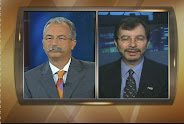
Recently, economic bulls were cheered by the news that earnings for the S&P 500 ex Financials rose a solid 11.8% in the first quarter of this year. Unfortunately, what the economic bulls seem to have ignored is the fact that once you drill down beneath the stratosphere of large cap issues you find a very different 1Q08 story.
Each week during earnings season, the Wall Street Journal compiles data for nearly 4,000 publicly-traded companies. As the table above shows*, the results paint quite another picture.
What the data reveals is that even when you include the S&P 500 big boys, earnings on a continuing operations basis were up a miniscule 0.33%, and on a net income basis they declined 1.46%. There are two facets of this data investors should consider.
First, were it not for the big boys the results would have been even worse for second and third tiered companies. Since large cap issues populating the 500 group benefit from exports via the global growth story, one can deduce that the more domestically oriented second and third tier companies on the WSJ list reflect a much worse US economic story than the headline numbers would suggest.**
Yet, there is a more ominous dimension to this data. For that I need you to read the following comments in the Tuesday Financial Times’ article titled “Fears of prolonged credit crisis set to hit Wall St”:
“We believe the real harrowing days of the credit crisis are still in front of us and will prove more widespread in effect than anything yet seen,” Ms (Meredith) Whitney said.
The culprit is less the writedowns themselves than the “shut-down” in the securitization market which at its height provided 66 per cent of household borrowings in the first quarter of 2007.
Without that market, consumer liquidity will come under increasing strain, something that will “push more consumers into precarious credit positions and cause consumer credit losses to be far worse than what is currently estimated, even by the most draconian of investors.”
Ms Whitney and her colleagues also slashed their 2008 earnings estimates for the large-cap banking sector by an average of 17 per cent and their 2009 estimates by 20 per cent.
Ms. Whitney’s comments stand in direct opposition to certain titans of Wall Street who proclaimed the worst of the credit crisis is over. And what her comments allude to tie directly into my second point (and here’s the onion): the potential for widespread credit defaults in an exceptionally weak US economy will almost certainly produce the Bill Gross (PIMCO) noted fear of $250 billion of writedowns courtesy the $60 trillion credit default swaps market.
Since many recent second and third tier bonds (particularly the high yield variety) were issued with very lenient covenants, default rates have been quite low thus far. However, according to various sources, that story will begin to change in 2009 as those lower quality bond chickens come home to roost resulting in the aforementioned huge writedowns.
Investment Strategy Implications
To paraphrase the old Wall Street technical analysis adage – when the generals move out but the infantry fails to follow, bad things are sure to occur. If investors simply relied on the headline results to reflect the state of US corporate profitability, they would get an overly rosy picture. Moreover, since it is the second and third tier companies (not to mention small businesses) that create jobs in America, one can assume that the economic pressures (should they not alleviate fairly quickly) will result in fewer jobs being created and wages under pressure. This second aspect suggests further difficulties for the already stressed US consumer, which takes you right to Ms. Whitney’s point.
Finally, to punctuate my big-do-not-reflect-reality point, consider the following excerpt from an article in the Economist magazine re the art market titled, “Stellar art-auction results in New York do not tell the full story”:
ON THE face of it, the art market is still booming—in spite of the credit crunch and fears of a recession.
…about one-third of works that were auctioned on May 6th and 7th were sold at or below the lowest estimated price. Overall takings were below expectations and lower than the total at comparable sales in the past couple of years. And bidding for the second-division artworks flogged during daytime auctions was sluggish at best. “Bids for the superstructure of the art market are still high, but the foundation is weakening,” says Matthew Rutenberg, an art historian in New York.
*click on image to enlarge.
**interestingly, when you exclude Energy from the list results were only marginally worse: -1.69% and -3.39%, continuing operations and net income respectively.















































